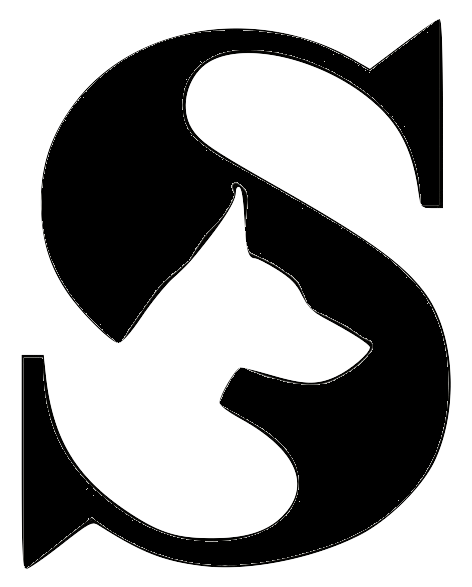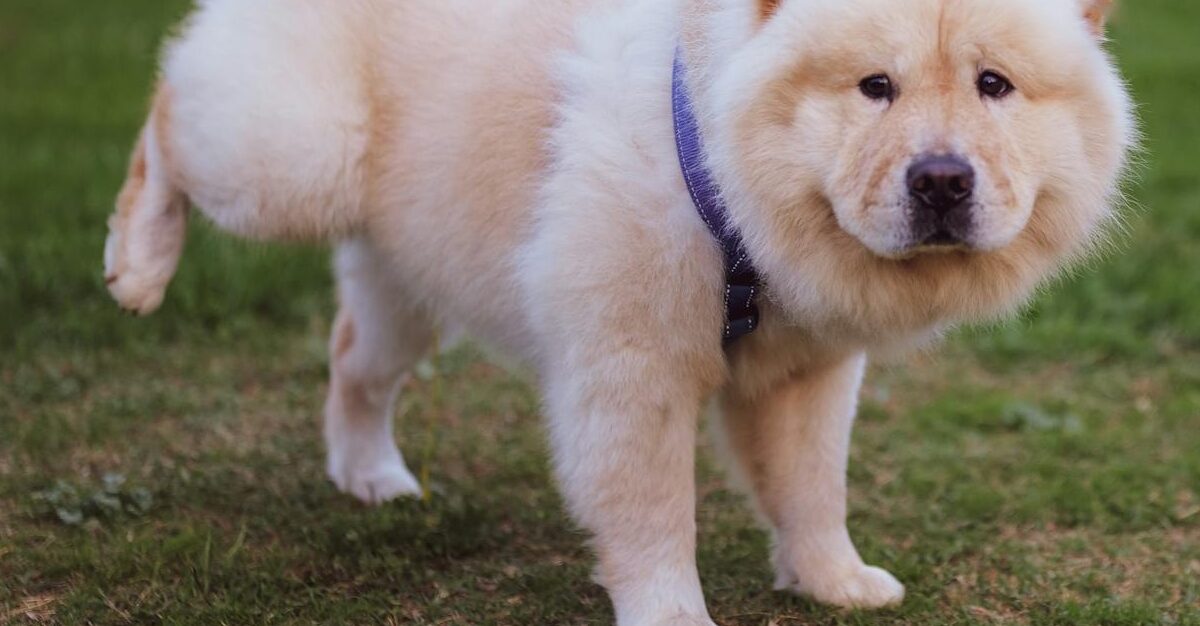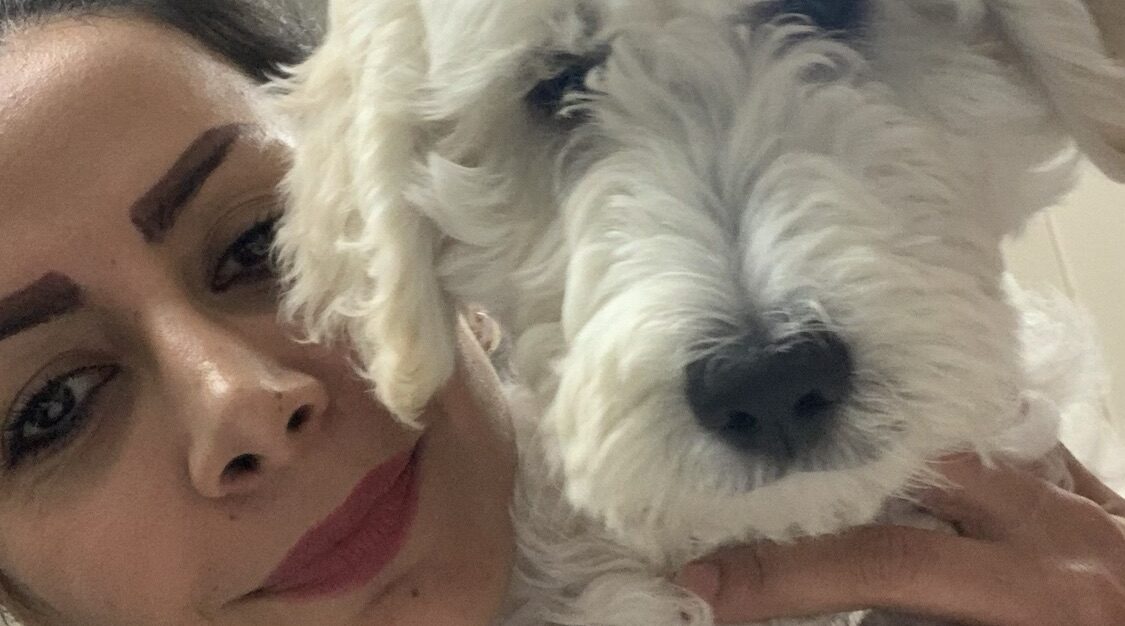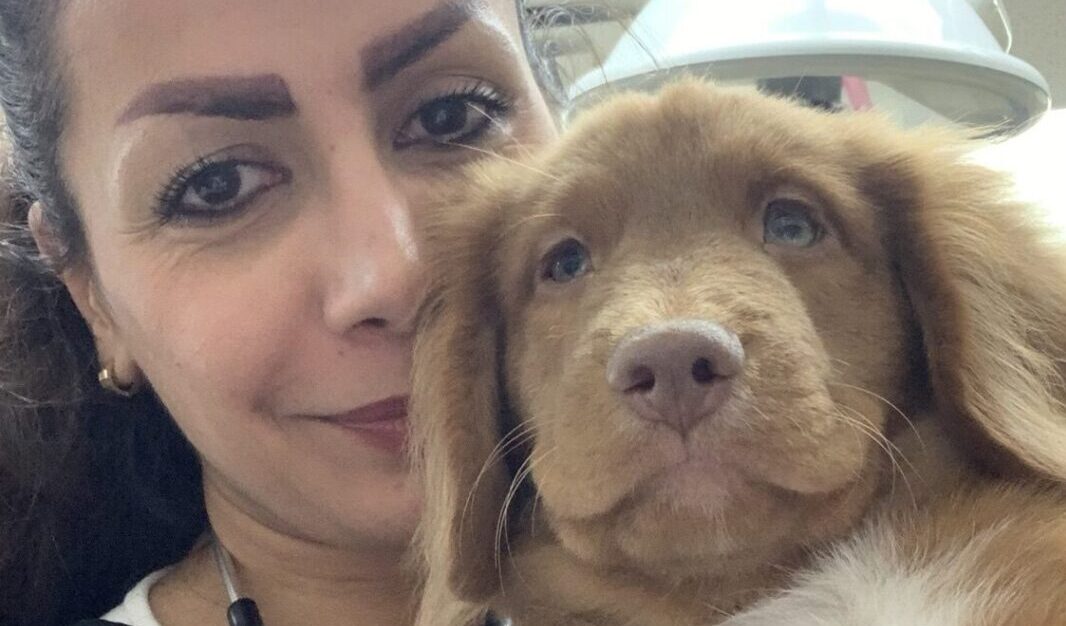Understanding Your Puppy’s Potty Signals
Potty training a puppy can seem like a daunting task, but it’s a journey worth taking. One of the first steps in this journey is understanding your puppy’s potty signals. Recognizing these signals can help you respond quickly, reducing accidents and making the training process smoother. If you’re looking to potty train a puppy in Vancouver, knowing these signs is crucial for success.
Recognizing the Signals
Your puppy can’t talk, but they communicate in other ways. One of the most common signals is sniffing the ground. Puppies often sniff when they are about to go potty. If you see your puppy doing this, it’s a good idea to take them outside immediately. Another common signal is circling. Puppies often circle a specific spot before they go. This is a clear sign that it’s potty time.
Pay attention to whining or barking, too. These vocalizations can indicate that your puppy needs to go out. Puppies might also scratch at the door or become restless, pacing around the house. These are all ways your puppy is trying to tell you they need a potty break.
Timing is Everything
Timing plays a big role in potty training. Puppies usually need to go potty after certain activities. For instance, most puppies will need to go out right after they wake up. Be ready to take your puppy outside as soon as they wake up from a nap. They will also need to go out after eating or drinking. This is because their small bladders fill up quickly, and they need to relieve themselves soon after meals.
Playing is another activity that often leads to a potty break. Puppies have a lot of energy, and playing can stimulate their need to go. Keep an eye on your puppy during playtime, and be prepared to take them outside when they start showing potty signals. By recognizing these patterns and signals, you can anticipate your puppy’s needs and reduce accidents.
Establishing a Routine
Establishing a routine is key to successful potty training. Consistency helps your puppy understand when and where they should go potty. Start by taking your puppy out at regular intervals. For example, take them out first thing in the morning, after meals, during playtime, and before bed.
A consistent routine helps your puppy learn faster. It also makes it easier for you to anticipate their needs. In Vancouver, where weather can be unpredictable, having a routine ensures that your puppy gets regular potty breaks, regardless of the conditions outside.
Using Positive Reinforcement
Positive reinforcement is a powerful tool in potty training. When your puppy successfully goes potty outside, praise them enthusiastically. You can use treats, toys, or just lots of love to show them they did a great job. This positive feedback reinforces the behavior you want to see and helps your puppy learn faster.
Avoid scolding or punishing your puppy for accidents. This can create fear and anxiety, making potty training more difficult. Instead, focus on rewarding the good behavior. If you catch your puppy in the act indoors, calmly interrupt them and take them outside to finish. Then, praise them when they go potty outside.
Understanding Individual Differences
Every puppy is unique, and their potty signals can vary. Some puppies might show obvious signs, while others might be more subtle. Spend time observing your puppy and learning their specific signals. This personalized approach will make potty training more effective.
In Vancouver, where you might encounter different environments and distractions, being attuned to your puppy’s signals is even more important. Some puppies might be distracted by noises or sights, while others might be more focused. Understanding these individual differences will help you tailor your training approach to your puppy’s needs.
Consistency is Key
Consistency is the cornerstone of successful potty training. Stick to your routine and be patient. Puppies are learning and will have accidents. The key is to stay consistent with your training methods and routines. This consistency will pay off in the long run, resulting in a well-trained puppy.
In conclusion, understanding your puppy’s potty signals is an essential part of potty training. By recognizing the signs, establishing a routine, using positive reinforcement, and understanding your puppy’s individual needs, you can make the process smoother and more effective. Whether you’re trying to potty train a puppy in Vancouver or anywhere else, these tips will set you and your furry friend up for success. Enjoy the journey, and remember to celebrate the small victories along the way!

Struggling with potty training? Call us at 236-777-5186 or reach out on Instagram at @SAMAKENNEL. We’re here to help!
Creating a Potty Schedule
When it comes to potty training, a consistent schedule is your best friend. A well-planned potty schedule can make a world of difference in training your pup. By establishing a routine, you help your puppy understand when and where to go, reducing accidents and stress. If you’re trying to potty train Poppy in Vancouver, a structured schedule will set you both up for success.
Morning Routine
Start your potty training schedule first thing in the morning. Puppies usually need to go potty right after waking up. As soon as Poppy wakes up, take her outside to her designated potty spot. This sets the tone for the day and reinforces the habit of going outside.
Make morning potty breaks a priority. Be consistent and take Poppy out at the same time every morning. This consistency helps her understand that mornings are for potty time. It also gives her a chance to relieve herself after a long night’s sleep, preventing any morning accidents indoors.
After Meals
Puppies typically need to go potty shortly after eating. Plan to take Poppy outside 10-15 minutes after she finishes her meal. This is when her digestive system will kick into gear, signaling that it’s time to go.
Stay close by and observe Poppy after she eats. Look for signs that she needs to go, such as sniffing around or circling. By incorporating post-meal potty breaks into your schedule, you can catch her when she’s ready to go, making the process smoother.
Playtime and Potty Breaks
Playtime is an exciting part of your puppy’s day, but it can also trigger the need to go potty. During play, Poppy might get distracted and forget to signal that she needs to go. To prevent accidents, include potty breaks during playtime.
Take Poppy out for a potty break before and after play sessions. This helps her associate playtime with regular potty breaks. Plus, it ensures she doesn’t get too caught up in the fun and forget her potty training.
Bedtime Routine
A consistent bedtime routine is essential for potty training success. Make sure Poppy goes potty one last time before settling down for the night. This reduces the chances of overnight accidents and helps her sleep more comfortably.
Create a calming bedtime routine that includes a final potty break. Take Poppy to her potty spot, give her a chance to go, and then settle her into her sleeping area. Consistency here is key, as it signals to Poppy that it’s time to wind down and sleep.
Setting Reminders
In the hustle and bustle of daily life, it’s easy to forget potty breaks. Setting reminders can help keep you on track. Use your phone or a timer to remind you of scheduled potty times, especially if you’re busy or have a lot on your plate.
Reminders ensure that Poppy gets regular potty breaks, which is crucial for reinforcing her training. Consistent breaks help her understand the routine and reduce the likelihood of accidents. It also shows Poppy that you’re attentive to her needs.
Adjusting the Schedule
Every puppy is unique, and what works for one might not work for another. Be prepared to adjust Poppy’s potty schedule based on her needs. Pay attention to her behavior and signals, and be flexible with your routine.
If Poppy seems to need more frequent breaks, adjust your schedule accordingly. Conversely, if she’s doing well and having fewer accidents, you might be able to extend the time between breaks. The key is to find a balance that works for both of you.
Patience and Persistence
Patience and persistence are essential when creating a potty schedule. Puppies are learning, and accidents will happen. Stay consistent with your schedule and remain patient with Poppy. Celebrate her successes and gently guide her through any setbacks.
Remember, potty training is a process. It takes time and dedication, but with a consistent schedule, you’ll see progress. Poppy will learn to understand the routine and develop good potty habits.
Choosing the Right Potty Spot
Potty training your puppy involves many steps, and choosing the right potty spot is one of the most crucial. This decision can make or break the entire process. For those embarking on potty training for a puppy in Vancouver, selecting a spot that works for both you and your puppy is essential.
Location, Location, Location
The first step in choosing the right potty spot is finding a suitable location. Ideally, this spot should be easy to access, especially during those urgent moments when your puppy needs to go right away. Consider a spot close to your door, but also somewhere that is quiet and free from distractions. Busy areas with lots of noise or foot traffic can make it harder for your puppy to focus.
In Vancouver, where rain is common, you might want a spot that stays relatively dry. A covered area or one with good drainage can help keep things cleaner and more pleasant for both you and your puppy. Avoid choosing a spot too far from the house, as rushing through bad weather can be unpleasant.
Consistency is Key
Once you’ve chosen a spot, it’s important to consistently use it for potty breaks. Taking your puppy to the same spot every time helps them associate that area with doing their business. This consistency reinforces their training and speeds up the learning process.
If you live in an apartment or a place without a yard, find a nearby park or designated dog area. In Vancouver, many parks have specific spots for dogs. Use these areas consistently to maintain your puppy’s training routine. The goal is to make the process as predictable as possible for your puppy.
Scent Marking
Puppies rely heavily on their sense of smell. Choosing a potty spot and allowing your puppy to use it regularly helps establish a scent marker. This marker signals to your puppy that this is the appropriate place to go potty. If your puppy leaves a little scent behind, it can encourage them to return to the same spot next time.
If your puppy has an accident indoors, clean it thoroughly to remove any lingering scents. This prevents your puppy from thinking it’s okay to potty inside. Outside, however, allow them to leave a scent in their designated potty area. This scent acts as a natural cue for future potty breaks.
Comfort and Safety
Your puppy’s comfort and safety are top priorities when choosing a potty spot. Make sure the area is free of sharp objects, toxic plants, or other hazards. Puppies can be curious and might chew on or ingest harmful items. A safe, clean spot ensures a positive experience for your puppy.
Comfort also means considering the ground surface. Soft grass is usually a preferred surface for puppies, as it’s gentle on their paws. In Vancouver, where the ground can be wet and muddy, you might consider using a patch of artificial turf. This can provide a consistent, clean surface for your puppy to use year-round.
Training Tools
Using training tools can help reinforce the chosen potty spot. A leash is a valuable tool during potty training. It helps guide your puppy to the correct spot and keeps them focused. Once they start to understand the routine, they might even lead you to their potty spot on their own.
Another useful tool is a designated command. Use a specific phrase, like “go potty,” each time you take your puppy to their spot. Over time, your puppy will associate the command with the action, making potty training more efficient. Consistency with commands and tools reinforces good habits.
Dealing with Distractions
Puppies are easily distracted, especially in new environments. When choosing a potty spot, consider potential distractions. Avoid areas with lots of activity, like busy streets or playgrounds. These distractions can make it difficult for your puppy to focus on the task at hand.
In Vancouver, you might encounter wildlife or other pets. If your chosen potty spot is near a popular dog walking route, try to schedule potty breaks during quieter times. Early mornings or late evenings can be less distracting for your puppy. Minimizing distractions helps them concentrate on their potty training.
Adjusting Over Time
As your puppy grows and their habits change, you might need to adjust the potty spot. What works for a small puppy might not be ideal for a larger, more active dog. Be flexible and willing to adapt as needed.
For instance, if your puppy starts to outgrow the designated area or if it becomes too muddy during Vancouver’s rainy season, consider shifting to a new spot. The key is to maintain consistency once the new spot is chosen. Reintroduce the area with the same commands and tools to ease the transition.

Potty training your puppy doesn’t have to be stressful. If you’re facing challenges and need expert advice, contact us at 236-777-5186 or message us on Instagram at @SAMAKENNEL. Together, we’ll make potty training a success for you and your furry friend!
Positive Reinforcement Techniques
Positive reinforcement is a game-changer when it comes to potty training your puppy. It focuses on rewarding good behavior rather than punishing mistakes. By using positive reinforcement, you can make potty training a fun and rewarding experience for both you and your puppy. For those navigating potty training for a puppy in Vancouver, these techniques can help create a smooth and stress-free process.
The Power of Praise
Praising your puppy when they go potty in the right spot is incredibly effective. Puppies love to make you happy, and your enthusiasm will encourage them to repeat the behavior. Use a cheerful tone and lots of praise when your puppy goes potty outside.
When Poppy does her business in the right spot, celebrate it! Say, “Good job, Poppy!” and give her a big smile. This immediate positive feedback helps her connect the action with the reward. Over time, Poppy will understand that going potty outside brings lots of love and attention.
Treats as Rewards
Treats are another powerful tool in positive reinforcement. Puppies are highly motivated by food, and a tasty treat can make a big impression. Keep a stash of small, delicious treats handy for potty training sessions.
When Poppy goes potty in the right spot, reward her with a treat right away. Make sure the treat is given immediately after she finishes. This helps her associate the act of going potty outside with receiving a yummy reward. Just be careful not to overfeed; small treats work best.
Consistent Commands
Using consistent commands during potty training is crucial. Choose a simple phrase like “go potty” or “do your business” and use it every time you take Poppy to her potty spot. Consistency helps your puppy understand what you expect from them.
Say the command just as Poppy is about to go potty. Over time, she will associate the command with the action. This can make future potty trips smoother, as Poppy learns to understand and respond to your cues. Consistency is key to reinforcing this behavior.
Timing Matters
Timing plays a significant role in positive reinforcement. It’s essential to reward your puppy immediately after they go potty in the right spot. Delayed rewards can confuse your puppy, making it harder for them to connect the behavior with the reward.
Stay close to Poppy during potty breaks so you can reward her right away. If you wait too long, she might not understand what the reward is for. Quick and immediate praise or treats make the connection clear, reinforcing the desired behavior effectively.
Avoiding Punishment
Positive reinforcement means focusing on rewarding good behavior and avoiding punishment for mistakes. Punishing your puppy for accidents can create fear and anxiety, which can hinder the potty training process. Instead, concentrate on encouraging and rewarding the right behaviors.
If Poppy has an accident indoors, clean it up without fuss and move on. Accidents are part of the learning process. Redirect her to the correct potty spot next time and reward her when she gets it right. Patience and positivity go a long way in successful potty training.
Building a Routine
Establishing a consistent routine is a key aspect of positive reinforcement. Take Poppy to her potty spot at regular intervals, such as first thing in the morning, after meals, during playtime, and before bed. This routine helps Poppy understand when and where to go potty.
Reinforce this routine with positive reinforcement. Praise and reward Poppy every time she follows the schedule and goes potty in the right spot. A consistent routine combined with positive reinforcement accelerates the potty training process, making it easier for both of you.
Social Praise
Puppies are social animals and enjoy attention and praise from their owners. Use social praise as part of your positive reinforcement strategy. Verbal praise, petting, and playtime are all great ways to reward your puppy for good behavior.
When Poppy goes potty in the right spot, give her lots of love and attention. Pet her, play with her, and let her know she’s done a great job. Social praise can be just as motivating as treats and helps build a strong bond between you and your puppy.
Using Toys
In addition to treats and praise, toys can be a fun way to reward your puppy. If Poppy has a favorite toy, use it as a reward for successful potty breaks. This adds an element of play and excitement to the training process.
After Poppy goes potty in the right spot, have a quick play session with her favorite toy. This not only reinforces the positive behavior but also makes potty training enjoyable. Mixing up rewards keeps things interesting for Poppy and maintains her enthusiasm for training.
Keeping It Fun
Potty training doesn’t have to be a chore. Keep the process light-hearted and fun for both you and Poppy. Celebrate each success, no matter how small, and maintain a positive attitude. Your enthusiasm will keep Poppy motivated and eager to learn.
In conclusion, positive reinforcement is a powerful tool in potty training for a puppy in Vancouver. By using praise, treats, consistent commands, and social interactions, you can create a positive and effective training experience. Remember to stay patient, consistent, and cheerful throughout the process. With these techniques, you and Poppy will master potty training in no time. Enjoy the journey and celebrate each milestone along the way!




